Abstract
Depending on the ABO blood group, gonorrhea may affect the titers of isohemagglutinins compared with those of uninfected controls. The isohemagglutinin titers in group O patients were significantly increased (P less than 0.001) against erythrocytes A, B, and AB. In group A patients, only the titer against AB erythrocytes was significantly increased. In group B patients, the titer against AB erythrocytes was significantly lower (P less than 0.001) as compared with that in sera of healthy persons. In six of eight volunteers, an increase in isohemagglutinin titer was observed after an injection of small doses of killed gonococci. However, guinea pigs, rabbit, or small monkeys, i.e., species for which gonococci are not apthogenic, when immunized with gonococci either did not form ABO hemagglutinins or did so with very low titers. In white gonorrhea patients, there was a significantly higher frequency of group B individuals over those with group A, AB, or O. No such correlation was found in black patients. Isohemagglutinins from human sera could be absorbed by cultured gonococci. The implications of these findings in the pathogenesis of gonococcus infection and the problems associated with vaccine development are briefly discussed.
Full text
PDF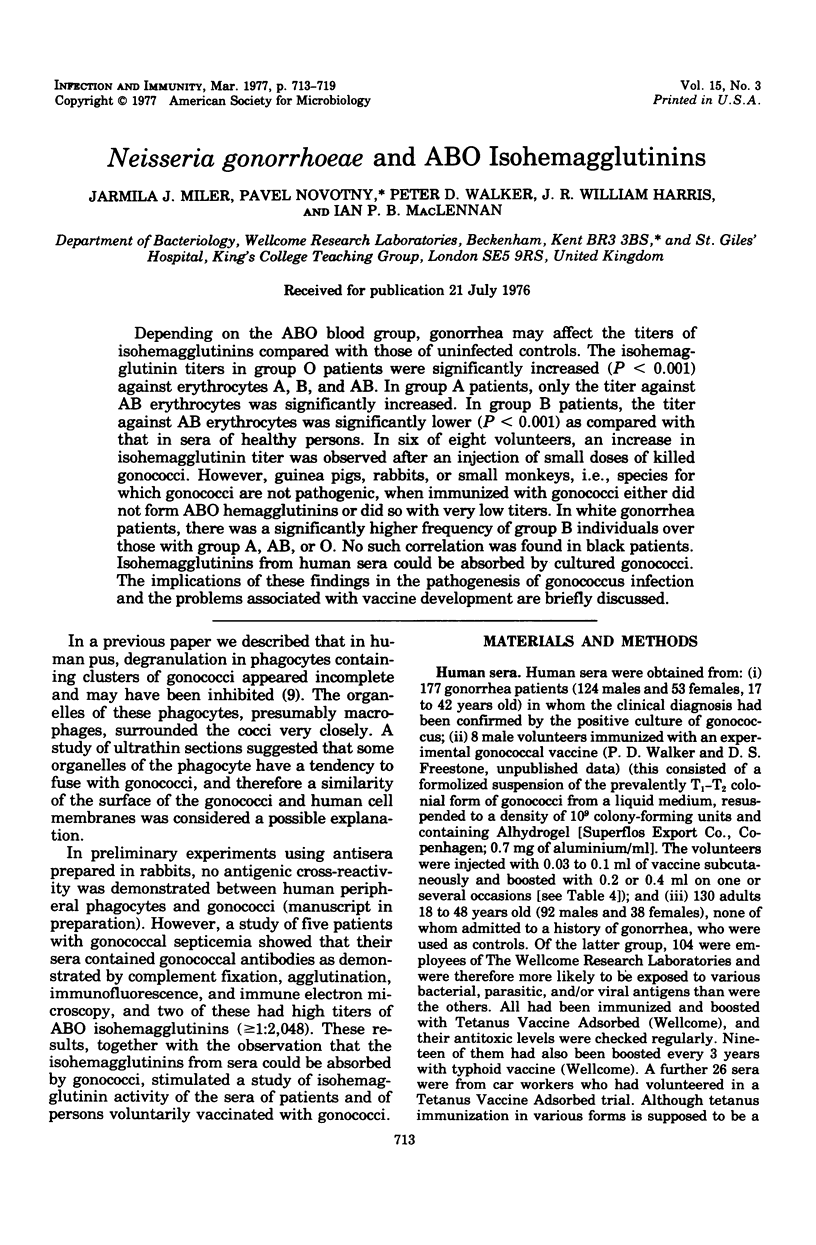
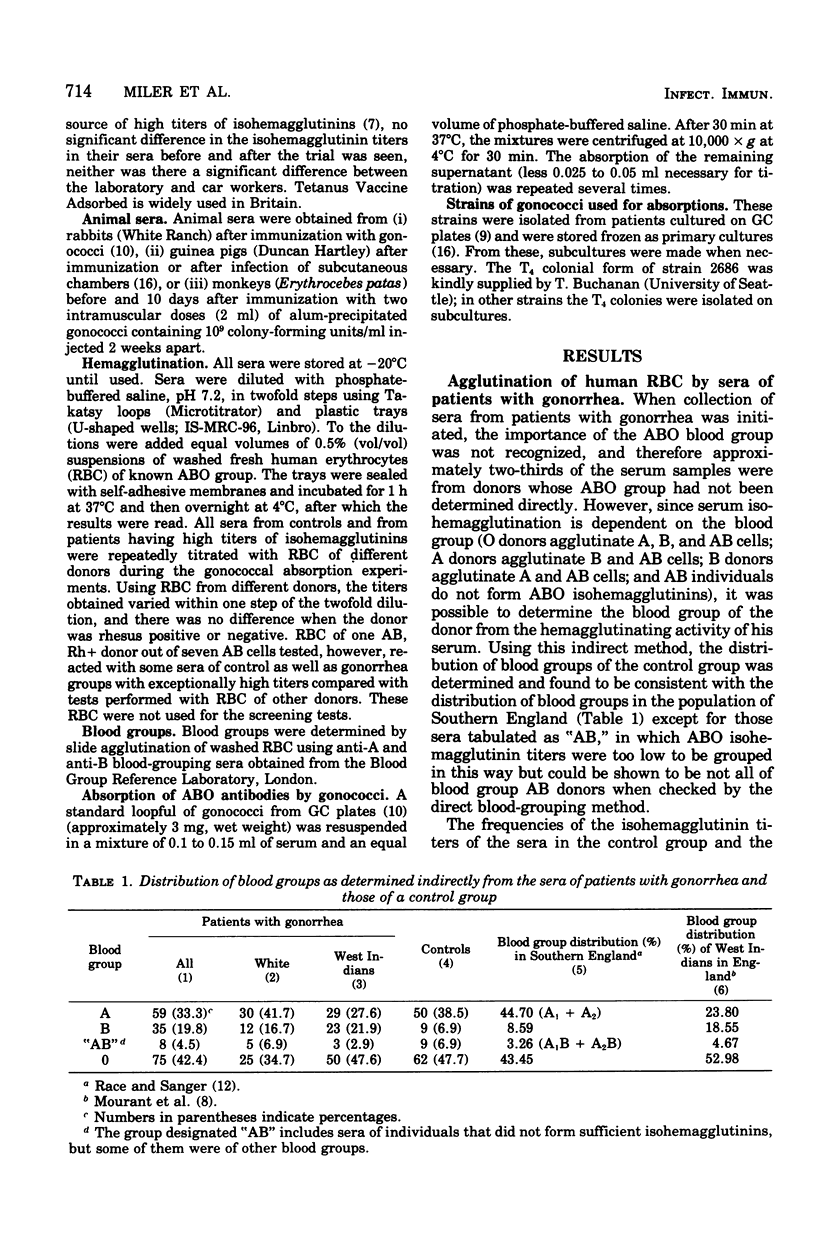
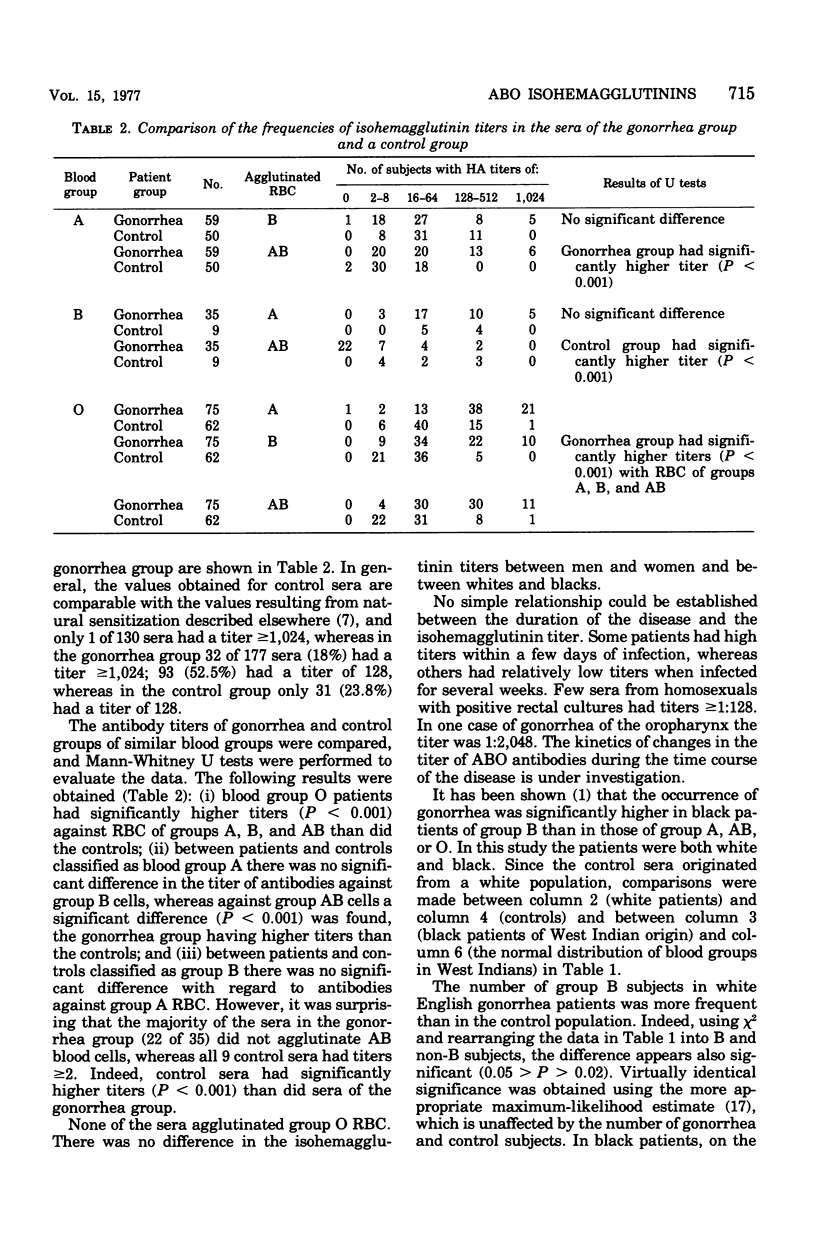
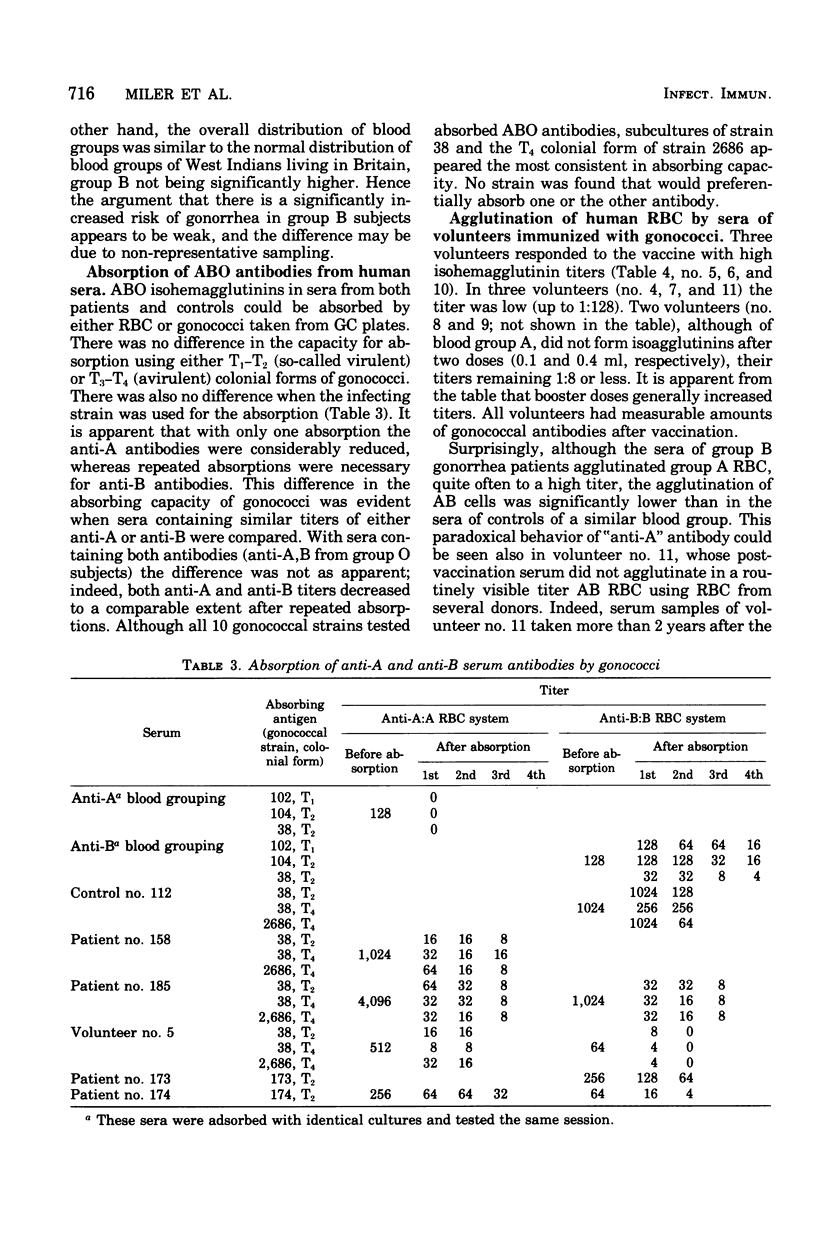
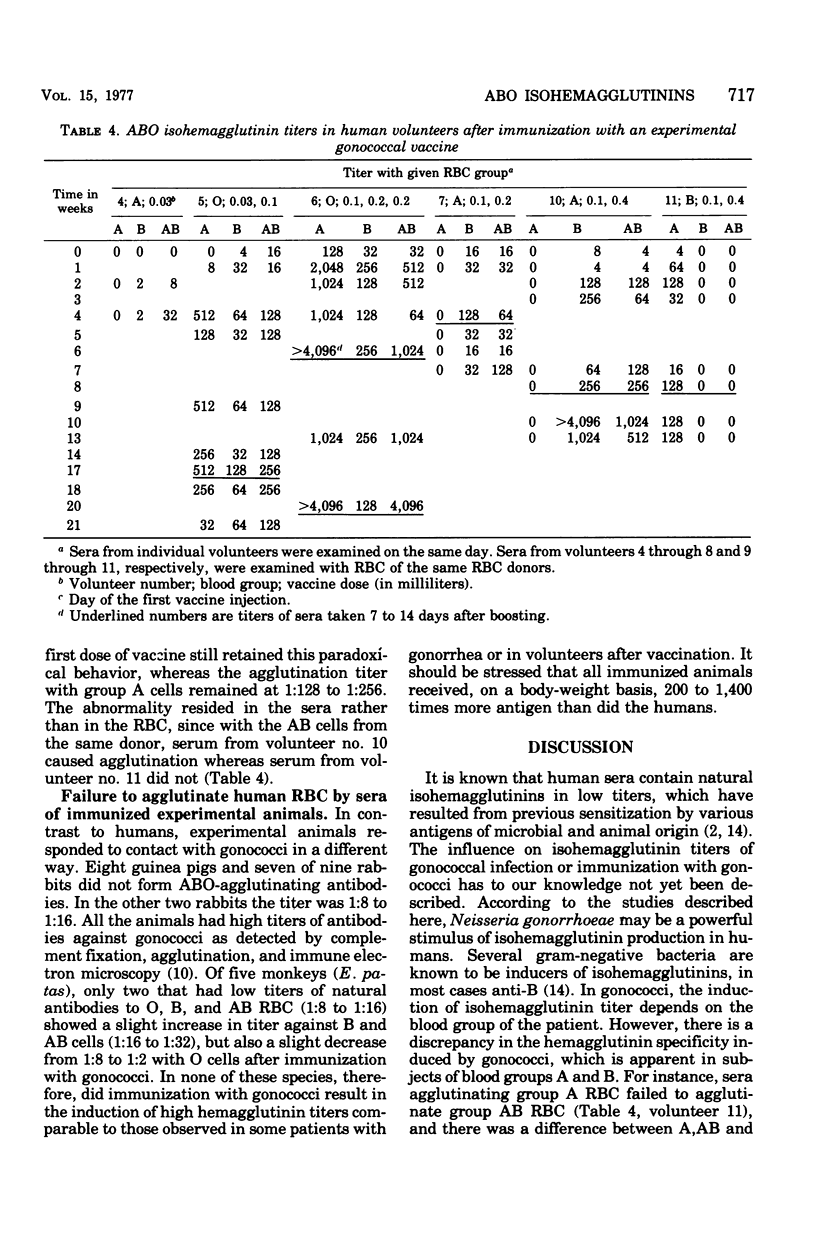
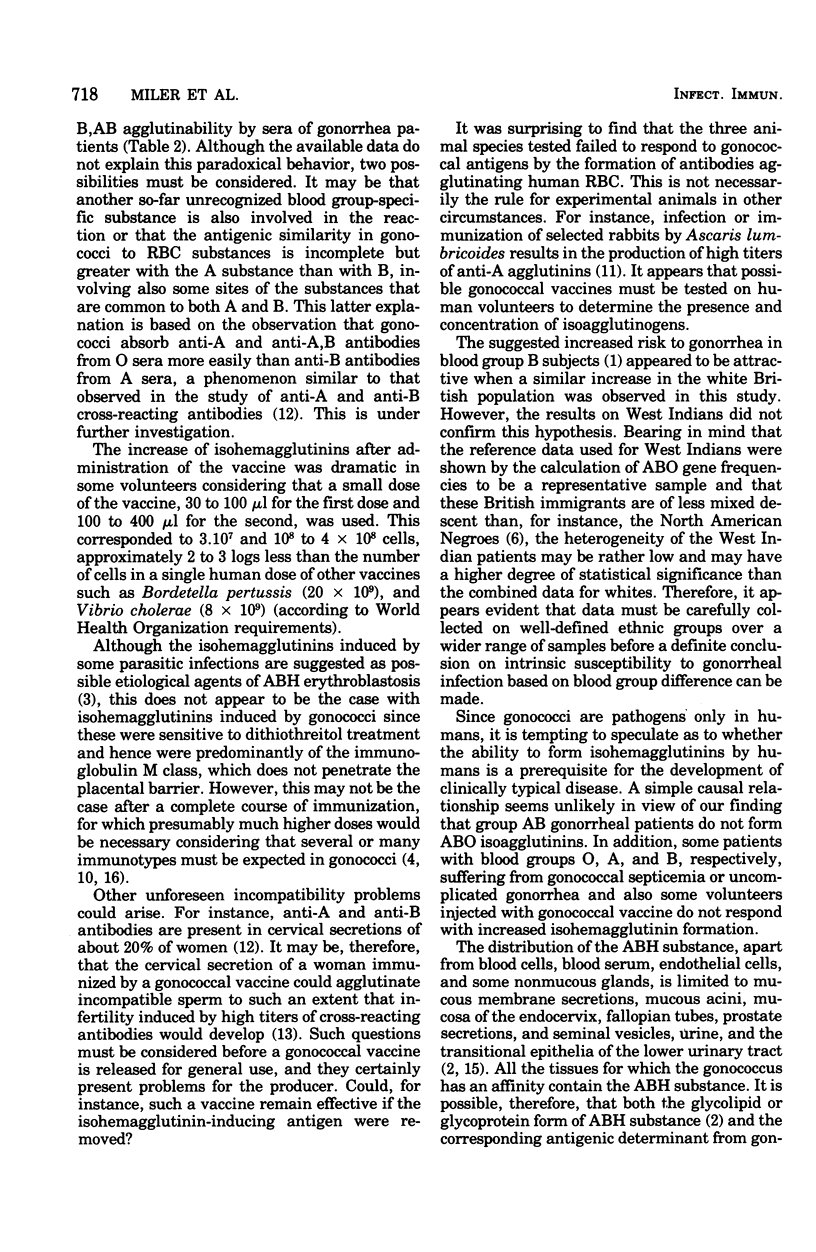
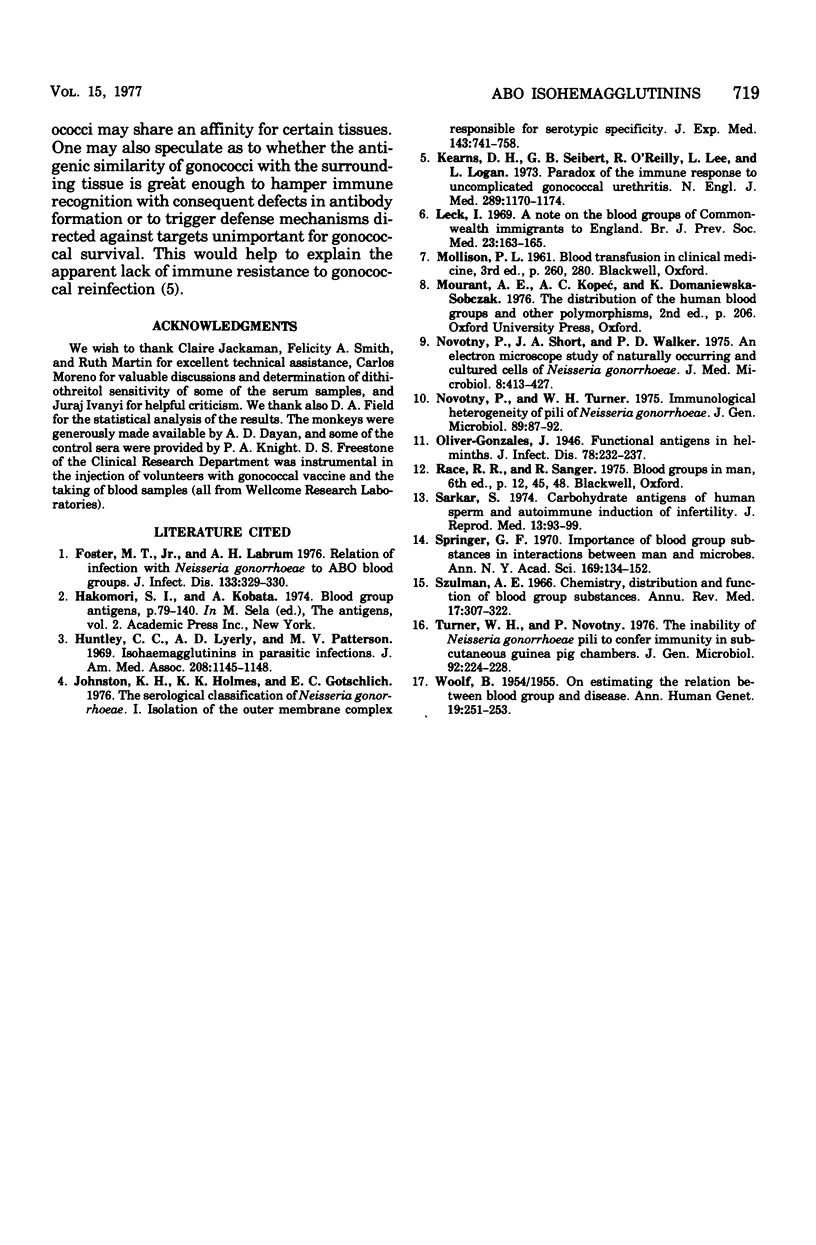
Selected References
These references are in PubMed. This may not be the complete list of references from this article.
- Foster M. T., Jr, Labrum A. H. Relation of infection with Neisseria gonorrhoeae to ABO blood groups. J Infect Dis. 1976 Mar;133(3):329–330. doi: 10.1093/infdis/133.3.329. [DOI] [PubMed] [Google Scholar]
- Huntley C. C., Lyerly A. D., Patterson M. V. Isohemagglutinins in parasitic infections. JAMA. 1969 May 19;208(7):1145–1148. [PubMed] [Google Scholar]
- Johnston K. H., Holmes K. K., Gotschlich E. C. The serological classification of Neisseria gonorrhoeae. I. Isolation of the outer membrane complex responsible for serotypic specificity. J Exp Med. 1976 Apr 1;143(4):741–758. doi: 10.1084/jem.143.4.741. [DOI] [PMC free article] [PubMed] [Google Scholar]
- Kearns D. H., Seibert G. B., O'Reilly R., Lee L., Logan L. Paradox of the immune response to uncomplicated gonococcal urethritis. N Engl J Med. 1973 Nov 29;289(22):1170–1174. doi: 10.1056/NEJM197311292892205. [DOI] [PubMed] [Google Scholar]
- Leck I. A note on the blood groups of commonwealth immigrants to England. Br J Prev Soc Med. 1969 Aug;23(3):163–165. doi: 10.1136/jech.23.3.163. [DOI] [PMC free article] [PubMed] [Google Scholar]
- Novotny P., Short J. A., Walker P. D. An electron-microscope study of naturally occurring and cultured cells of Neisseria Gonorrhoeae. J Med Microbiol. 1975 Aug;8(3):413–427. doi: 10.1099/00222615-8-3-413. [DOI] [PubMed] [Google Scholar]
- Novotny P., Turner W. H. Immunological heterogeneity of pili of Neisseria gonorrhoeae. J Gen Microbiol. 1975 Jul;89(1):87–92. doi: 10.1099/00221287-89-1-87. [DOI] [PubMed] [Google Scholar]
- Sarkar S. Carbohydrate antigens of human sperm and autoimmune induction of infertility. J Reprod Med. 1974 Sep;13(3):93–99. [PubMed] [Google Scholar]
- Springer G. F. Importance of blood-group substances in interactions between man and microbes. Ann N Y Acad Sci. 1970 Feb 13;169(1):134–152. doi: 10.1111/j.1749-6632.1970.tb55979.x. [DOI] [PubMed] [Google Scholar]
- Szulman A. E. Chemistry, distribution, and function of blood group substances. Annu Rev Med. 1966;17:307–322. doi: 10.1146/annurev.me.17.020166.001515. [DOI] [PubMed] [Google Scholar]
- Turner W. H., Novotny P. The inability of Neisseria gonorrhoeae pili antibodies to confer immunity in subcutaneous guinea-pig chambers. J Gen Microbiol. 1976 Jan;92(1):224–228. doi: 10.1099/00221287-92-1-224. [DOI] [PubMed] [Google Scholar]
- WOOLF B. On estimating the relation between blood group and disease. Ann Hum Genet. 1955 Jun;19(4):251–253. doi: 10.1111/j.1469-1809.1955.tb01348.x. [DOI] [PubMed] [Google Scholar]


